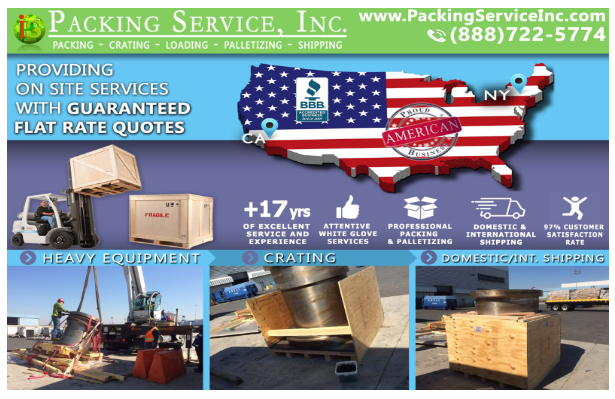How Much Liquid Chlorine to Add to Your Pool
Chlorine levels are important to keep your pool water safe and clean. In this article, we will answer these questions and more (how do you remember to keep ALL the chlorine in your pool at the appropriate level) with a deep dive into how much liquid chlorine to add & maintain; complete with practical wisdom and answers from Beatbot premium robotic swimming products for cleaning pools.

1. Understanding Pool Chlorine
Chlorine is an essential element to help your pool stay clean and safe. That is, it serves as a disinfectant that eliminates the harmful bacteria, viruses and algae that can occur in pools. Aiding in the chlorination process of oxidizing organic contaminants: Sweat Oils Debris such from swimmers
Types of Chlorine Products:
- This is practically instant and very simple, it’s liquid chlorine.
- Slow-dissolving for continuous sanitization, these are the most convenient tablets.
- Chlorine in granular form (faster-dissolving type is best, for shocking).
How Chlorine Works
Chlorine combines with water in the pool to produce hypochlorous acid (HOCl) and ion self-reactive chlorite group. These leavenders are efficient in slaughtering little oxidizing particles and de construction the natural yields. Chlorine is more or less effective depending on the pH level of your pool — it should be in a range of 7.2 to 7.6 for best results.
Balancing Chlorine Levels
One of the most important things when it comes to properly sanitizing is making sure you keep your chlorine level between 1-3 ppm keeping it above this will help make sure that algae and bacteria are killed off, but staying too far out of range can cause irritation in eyes or skin. It is only with testing and adjustments that you can get the levels to safely fall within their recommended range.
Stabilize Your Chlorine If you have an outdoor pool, chlorinating the pool can be a losing battle with that sun shining down and eating up your chlorine. Cyanuric acid is best in the range of 30-50 ppm.
Increased Chlorination Effectively
- Uniform Dispersion: Take shot glass of chlorine end for the pool.
- Just test 2 to three times a week for chlorine levels.
- Chemicals to use: Shock the pool weekly in order TM kill bacteria and clear water of chloramine.
2. Determine Factors of Chlorine Demand
These days are very hot and the pool water tends to warm up quickly, making it difficult for you to maintain chlorine levels;
1. Pool Size and Volume
So if you have a larger pool, meaning your gallons of water are higher than average, then more chlorine is needed to clean that swimming environment. Calculate by measuring the length and width of your pool, as well as its average depth to determine volume in gallons.
2. Pool Usage
- Frequency: Thing is when more swimmers come over, they also bring their sweat and oils into the water.
- Occasions: Other than pool parties, you may need to add more chlorine during heavy use periods.
3. Environmental Factors
- Ultraviolet Light (UV): Lastly, UV light causes chlorine to breakdown and the pool will need more treatments.
- Rain and Wind: Causing debris (dirt, organics) to enter the pool usually increasing chlorine demand.
- Organic materials: Debris and leaves use up chlorine as they break down.
4. Water Temperature
Heat: The warmer the water, the faster chlorine get used up and heated makes algae grow therefore it needs more Chlorine.
5. Water Balance
- pH Levels – The perfect pH levels for your pool are 7.2-7. Clorine effectiveness is lowered by low or high pH levels
- Alkalinity and Hardness – The right remedy helps stabilize your water that allows you to maintain a chlorine stage.
6. Stabilizers
Cyanuric Acid: Stabilises chlorine from UV degradation Ideal levels are 30-50 ppm. Over-stabilizing also decreases the ability of your chlorine to work.
7. Pool Shocking
Shock Weekly: Shocks Clear Up The Water and Kills Chloramines
8. Contaminants
Organic Load (increased consumption of chlorine via the introduction of lotions/oils/etc.)
Knowledge of these factors and what they do for you in terms of your swimming pool will allow you to achieve this. Rather, shock chlorination should be supplemented with more sophisticated cleaning solutions such as Beatbot robotic pool cleaners to keep the water quality at its best and reduce manual work.
Beatbot Products:
AquaSense Pro: Complete cleaning with decreased organic load and lower chlorine demand.
AquaSense Does well against debris and algae, and brings cleanliness back to your pool as a whole.
To learn more about Beatbot, the leading supplier of innovative swimming pool care solutions visit the webpage
3. How Much Liquid Chlorine Should You Use On The Pool?
For instance, finding the right amount of liquid chlorine to add to your pool entails a few crucial procedures that will allow you enjoy an effective sanitation and still maximize safety.
Step-by-Step Guide
Measure the pool: Measure your pools length, width and average depth to estimate the volume in gallons.
Formula:
Volume (gallons) = L X W X AvgDepth X 7.5
Example Calculation:
Volume = 20 × 40 × 5 × 7.5 = 30,000 gallons For example a pool size of: 20 ft x 40 ft Average Depth feet (Ave.)
Chlorine dosage = 1 gallon liquid chlorine (12.5% sodium hypochlorite) per 10,000 pool gallons to raise the level by + 10 ppm
Example:
Being a 30,000-gallon pool: Chlorine Needed = (30,000 / 10,000) x 1 = 3 gallons of liquid chlorine
Quick Cheat Sheet Table Below:
Pool Volume (gallons) / Amount of Liquid Chlorine (gal) to Raise 10 ppm:

Additional Considerations
- Initial Shock: Opening the pool for season or after a lot of use, one may be required to go with heavy dose ups to initially clear off contaminations
- Routine Maintenance: Keep the chlorine level to a normal range and perform necessary treatments regularly. Ideally, you will keep your pool at a 1-3 ppm sanitization level with no end date, not just ‘until the shock or pack of tabs runs out,’ as is common practice.
4. Testing Pool Water
Testing your pool water on a regular basis is the most important practice you can follow to keep swimming fun and safe. For how to properly test your pool water, we have a step-by-step guide below:
Importance of Testing
Testing keeps this vital balance in check and lets you know when the water is safe – or unsafe. Chlorine levels, pH, alkalinity and cyanuric acid are the most important parameters.
Types of Testing Kits
- Test Strips: They make it easy to get the results, just dip the strip into water and they change color based on chemical levels. You just dip the strip in the pool and compare how it looks with a little card they give you
- Liquid Test Kits: These will give you better results. These kits normally offer reagents added to a liquid medium, which in response change color so that you may go through the results on a visual scale.
- Electrical Testers: Use electronic sensors to provide accurate readings. These are usually overpriced, but measure many parameters fast and precise as well.
How to Test Your Pool Water
Take a Sample: Use a clean container to get water from 18 inches below the surface, and far away from pool return jets.
Test According to Instructions: Use the testing method that is detailed in your test kit.
Interpret results: Compare the color changes or digital readout to the proper levels for chlorine (1-3 ppm), pH (7.2-7.6), alkalinity (80-120 ppm) and cyanuric acid (30-50 ppm).
Track and Tweak: Write down your results and see how they change in time. Adjusting pool chemicals based on test results
Maintaining Balanced Water
- Chlorine: 1-3 ppm Liquid chlorine – ideal for quick adjustments
- PH: 7.2 – 7.6- ideal for the pool chlorine to work effectively providing it is a more comfortable swimming environment by keeping within this range
- Alkalinity: Regulates pH tiers. Should be between 80-120 ppm.
- Cyanuric acid (or stabilizer): Protects chlorine from being degraded by UV. Keep between 30-50 ppm.
Ongoing testing and maintaining healthy water is vital to avoid algae, cloudy war & skin irritation which can ruin an otherwise ideal swimming experience.
5. How to Add Liquid Chlorine To Your Pool
Correctly adding liquid chlorine to your pool will help you prevent most of the problems You may encounter with water quality. Follow this step-by-step safety and best practices guide.
Safety First
- Wear Safety Gear: Gloves, Protective Skin Cream & Eye Goggles.
- Warning: Chlorine is a heavy-duty chemical and should not be inhaled, nor come into contact with the skin.
How to Add Liquid Chlorine the Right Way
- Calculating the Required Amount: Using the formula above, determine the volume of your pool; as well as how much chlorine you will need to sterilize it.
- Evening Addition: Apply chlorine in the evening or night to help reduce all of this from degrading due to UV sunlight at least.
- Dilute Before Adding: To make it safer and distribute in a better manner, mix the chlorine with some pool water on a bucket before introducing to the swimming pools.
- Distribute Evenly: Gently pour the pool chlorine mixture evenly along side points of your all above-ground swimming pool.
- Use the Pool Pump: Run the pool pump to carry water and distribute chlorine throughout.
- Wait Before Swimming: Never permit swimmers into the pool for at least 8 to twelve hours after adding chlorine. Verify Free Available Chlorine 1-3 ppm
Regular Maintenance
- A weekly shock, along with regular chlorination will keep your pool beautiful and the water clear.
- Regulating Frequent Testing: Chlor-Dpool chlorine tests 2-3 times weekly and balance when out of range.
6. Maintaining Chlorine Levels
Regular chlorine maintenance is important to protect the hygiene and safety of swimmers. Whether you are new to pool maintenance or an experienced homeowner, maintaining the correct Chorine levels for your typical household is piecemeal when following this complete guide.
Regular Testing
- How Often: Check with a test kit 2x-3 per week to ensure chlorine level.
- Tools – Choose reliable test strips, liquid test kits, or digital testers for accurate readings!
Ideal Chlorine Levels
- Ideal/high Propapde: 1 to three ppm
- Note: If low alkalinity and pH are out of alignment, chances are the calcium hardness level is likewise incorrect. If it is too high, simply let the levels drop on their own or use a chlorine neutralizer.
Routine Maintenance
- Daily Check: Watch chlorine and add 1-2 tablets as needed
- As a generalization, we like to tell people that you should shock the pool once per week; this not only takes anything above 5 CCs and eliminates it by chemically raising chlorine up over 10 ppm for about an hour but also will get rid of any other organic contamination in your water as well.
- Harmonized Water: The PH must be adjusted to 7.2-7.6 and bestpring chlorine works There is, however, increased demand for tests and chemicals to modulate alkalinity or other stabilizers.
Addressing Common Issues
Chlorine Lock: This happens when chlorine will not work due to high levels of cyanuric acid. Simply dilute the pool water to rectify this.
To combat algae, you will need to shock the pool and use algaecide. Thoroughly brush the pool surfaces
7. Troubleshooting Common Issues
Even the most vigilant poolkeeper can still have common problems that require attention. Common Problems & Quick Fixes
Cloudy Water
Causes:
- Low chlorine levels
- Imbalanced pH or alkalinity
- Poor filtration
Solutions:
- Testing and Adjustment: Test for chlorine, pH, and alkalinity then adjust.
- The least demanding approach to evacuate impurities from the water is normally ending up boiling hot water and adding some pool stun which will rapidly devastate any defilement in your swimming pools.
- Clean or Backwash the Filter, and Make Sure it Runs X Hours Per Day
Algae Growth
Causes:
- Insufficient chlorine levels
- Poor circulation
- Imbalanced pH
Solutions:
- Shock and Brush: Shock the pool, then while maintaining above normal chlorine levels in the pool for a couple of days brush all surfaces very well to remove algae.
- Apply algaecide: To kill any remaining algae use a suitable Algecide.
- Keep Circulation: You must have fantastic water distribution and also purging.
Chlorine Lock
Causes:
- High cyanuric acid levels
- High organic load

Solutions:
- If so, you may partially drain and Refill: dilute the water by draining part of your pool and filling it with fresh one.
- Shock Treatment – A very powerful shock treatment to destroy impurities encapsulated and on the surface.
Eye and Skin Irritation
Causes:
- Imbalanced pH
- High chlorine levels
Solutions:
- pH Testing and Correction: Ph between 7.2-7.6
- You Need to Keep Your Chlorine in Check: Have your chlorine within the healthy range of 1-3 ppm.
Foam on Water Surface
Causes:
- Contaminated by organics
- Algaecide overuse
Solutions:
- Shampoo the Fucker: Make sure you kill everything off with a chlorine shock
- Skim and Clean – remove superficial debris or contaminants
Pros of Beatbot Pool Cleaners
Just keeping water clean and organic load under control by robotic pool cleaners such as the Beatbot can drastically cut down on these issues:
- However, it provides effective cleaning of the floor, walls, and waterline so that all impurities are released keeping green algae away.
- AquaSense: With its smart navigation and powerful cleaning power, this robot will make sure your pool stays beautiful.
Beatbot’s advanced cleaning formulas are designed to keep your pool cleaner for longer, making it easier and more cost-effective to clean less often. Head to Beatbot to find out more.
Conclusion
We now return to your regularly scheduled advice about chlorine, because the correct amount of it is equally important for pool health. The value of a robotic pool cleaner from Beatbot can be considered in terms of time saved manually cleaning the pool (which is work that isn´t necessary, once you get over to maintain just your chemicals).
Find a high-quality pool cleaning solution from Beatbot at the leading Beatbot.



